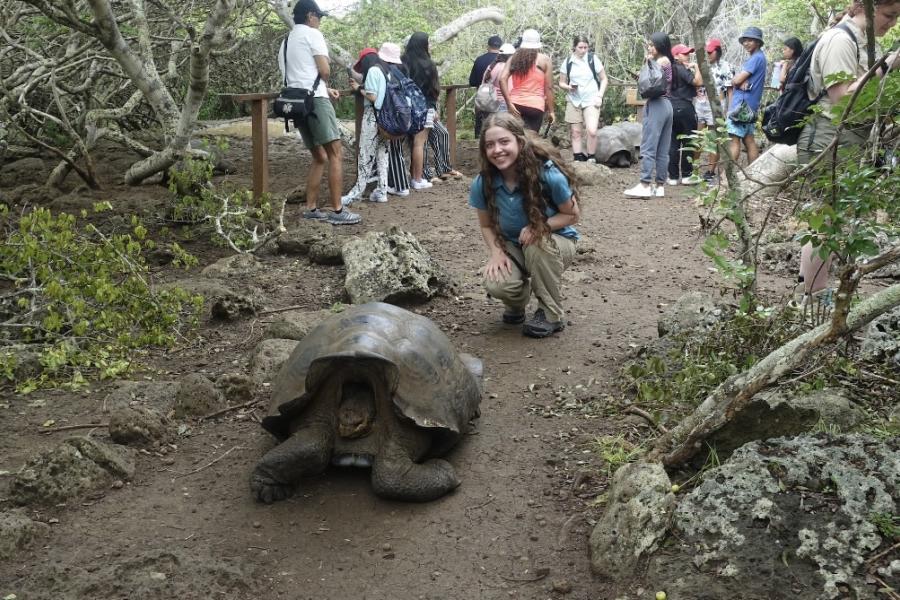Department of Biological Sciences

New Research Initiative Aims to Unravel Genetic Adaptations to High Altitude Hypoxia
A Kent State faculty researcher in the Department of Biological Sciences has launched a pioneering study to explore how different species adapt to high-altitude environments in the Himalayas where oxygen levels are significantly lower. This research could have significant implications for understanding hypoxia-related conditions in humans.

Kent State Student Recognized as ARI-AHEC’s 2024 Scholar of the Year
Meet Elizabeth Marhefka, a Kent State University biology and premed student whose exceptional dedication to community service and academic excellence has earned her the prestigious 2024 Scholar of the Year Award from the Akron Regional Interprofessional-Area Health Education Center (ARI-AHEC). Her i…
IN A FLASH: ‘BEE’ on the Lookout
A Kent State researcher is asking Flashes to "BEE" on the lookout for bees on the Kent Campus. She would like people to capture photos of the bees and then send them to her for use in a research project.

Firefly Numbers Are Dwindling, But You Can Help
Kent State associate professor and population ecologist Christie Bahlai, Ph.D., offers tips to help our little bioluminescent buddies to thrive.

Researchers map aquatic-based, human-driven impacts on climate change
A study published in the journal Science uses a global experiment and predictive modeling to illustrate how human impacts to aquatic ecosystems are contributing to the global climate crisis.The study estimates rates of organic-matter decomposition in freshwater ecosystems (a source of carbon e…
ESDRI Seed Grants Enable Early-Stage Research on Indigenous Land Conservation, Carbon Stabilization, and Invasive Species
Each year the Environmental Science and Design Research Institute (ESDRI) hosts a competitive request for proposals which are reviewed by an interdisciplinary panel, awarding seed grants with funding up to $12,000 for multidisciplinary research related to ESDRI’s wide-ranging areas of focu…
Kent State Institute Celebrates Graduating Fellows
The Environmental Science and Design Research Institute (ESDRI) supports students through their fellowship program. In this program students across any major with interest in environmental science or design come together to form a like-minded, yet diverse, community. Fellows receive mentor…
IN A FLASH: Go Get Your Greens at the Spring Plant Sale!
The annual Spring Plant Sale at the Herrick Conservatory offers a chance for Flashes to add more green into their gardens and homes. Students help grow the plants and paint rain barrels. The event helps raise funds for several biology-focused student organizations.

Postdoctoral Scholar Receives Green Roofs for Healthy Cities Dissertation Award
The work of a Kent State University Biological Sciences doctoral graduate recently received recognition from green roof experts from across North America who are looking to address contemporary environmental challenges, especially in urban environments. Katherine (Katie) McNamara Manning, Ph.D.…